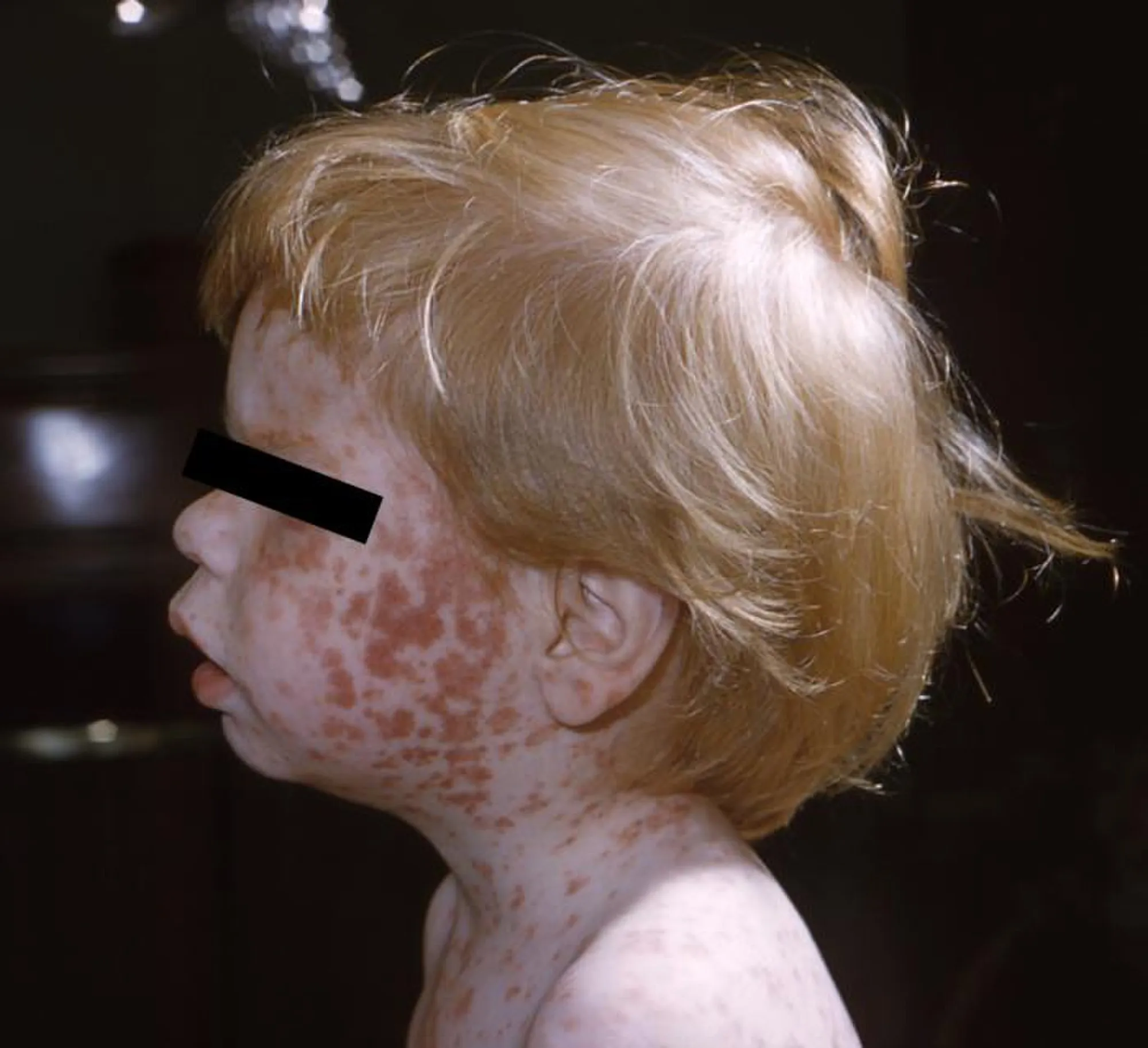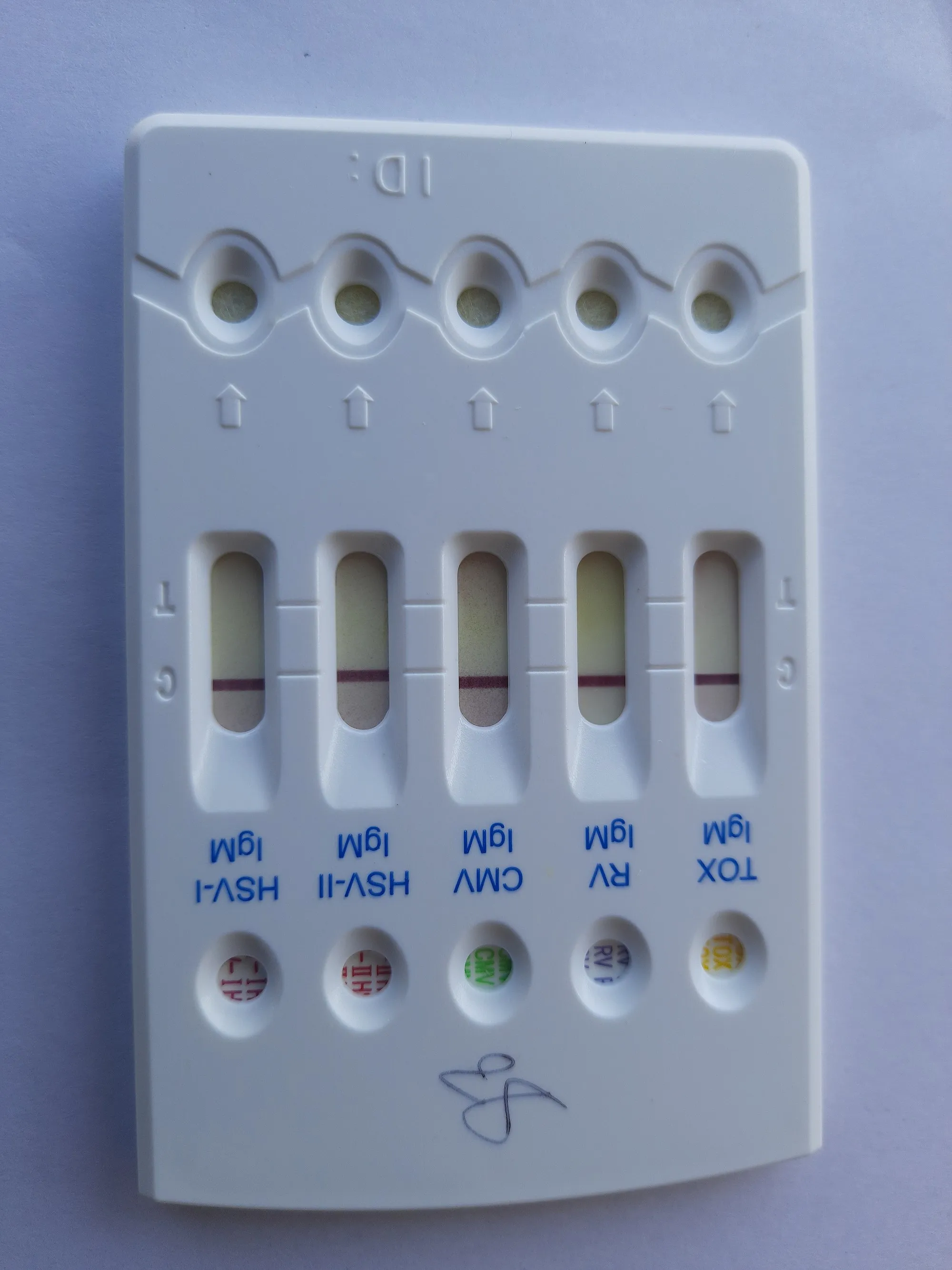It is another opportunity to share our research work here. This research work is similar to the one I shared not long ago here but this time, the research focused on another Southwestern state in west Africa. I love and engage in research studies not because I just want to, but because interesting findings from them give me that sense of satisfaction that a lot of things can be done to solve societal challenges.
Seeing people say 'I am now alright' after medical intervention brings a lot of joy and gladness to my heart. The feeling is unquantifiable. The reverse is the case in some disease conditions where you are virtually handicapped on what to do to save a dying patient just because of the dearth of knowledge about some diseases and ways to prevent them on time.
After a careful study of the rubella virus and from the findings from our last study, I got to discover that a lot of work needs to be done in terms of awareness creation about preventive measures against the virus. This research is just a simple way to reach out to as many as possible and one way to do that is by bringing our findings to a wider community audience.
The first effective vaccine against rubella virus of Rubella was produced in the year 1963 and in 2004, rubella was completely wiped out in some country, for example in the US.
Rubella elimination is defined as the absence of continuous disease transmission for 12 months or more in a specific geographic area. Rubella is no longer endemic (constantly present) in the United States. However, rubella remains a problem in other parts of the world. It can still be brought into the U.S. by people who get infected in other countries.
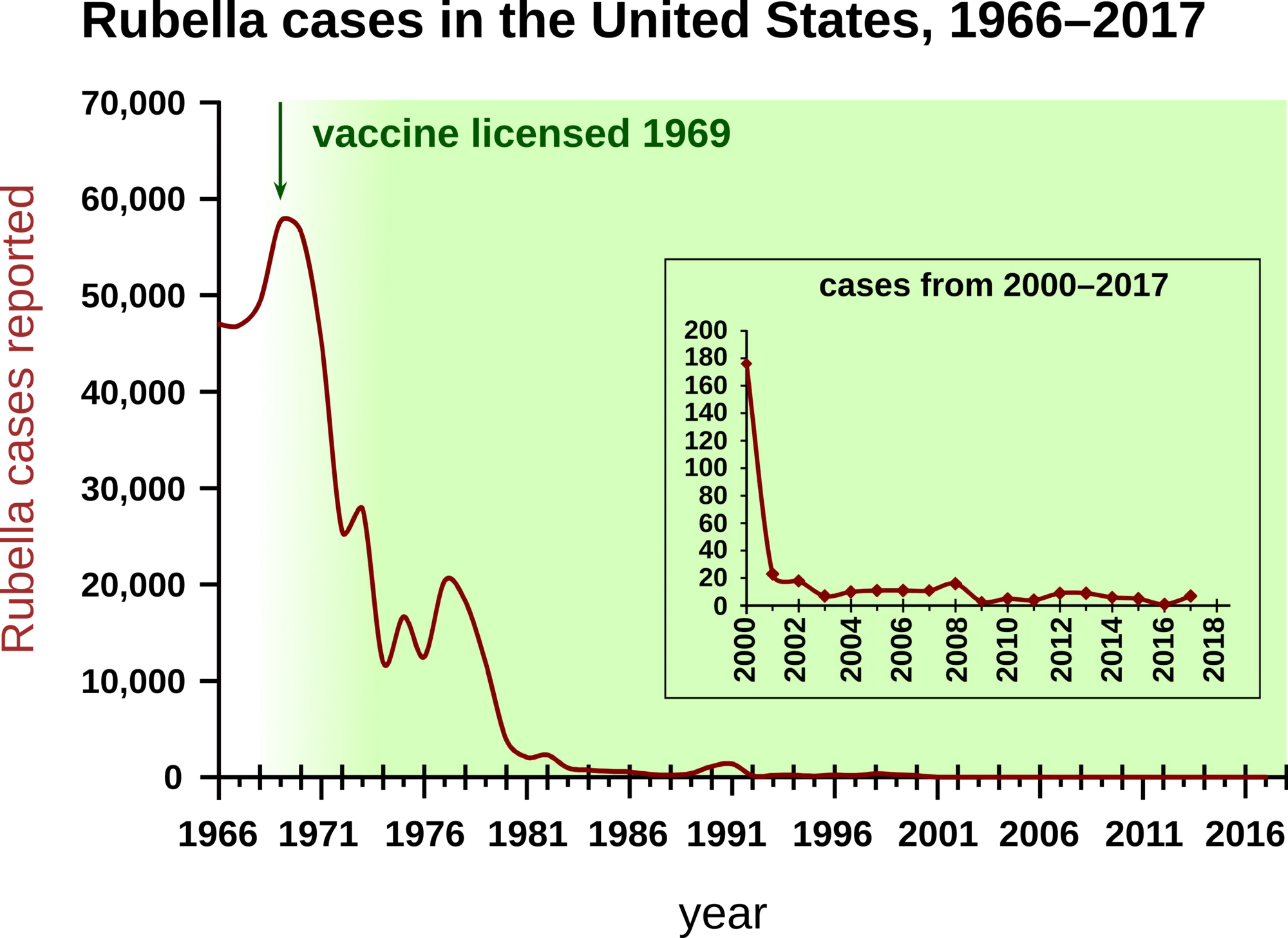 Declining cases of Rubella cases after vaccination in US
Declining cases of Rubella cases after vaccination in US
Till date, the incidence of this virus has drastically reduced. Of a truth, vaccination has been of great help in eliminating this virus, but unfortunately, we cannot confidently say this in all countries, for example in West Africa. That been said, let's quickly have a general view of our findings through the abstract.
Abstract
Rubella is a disease caused by the rubella virus. It causes a significant human public health problem in developing countries, Nigeria inclusive. Efforts were made in this study to determine its seroprevalence in women of childbearing age attending University Teaching Hospital, Ado-Ekiti, and Ekiti State in Nigeria. Out of a total of 151 samples tested using IgG sandwich ELISA-based kits, 132 (87.4%) were positive while 19(12.6%) were negative. The women within the age range 21 - 25years had the highest prevalence of 23.8% while the least was in the age range 41-60 (4.6%). Among different occupations, civil servants and traders had the highest prevalence of 27.8% each while the least was observed among housewives (26%). Results from educational status showed that women that had tertiary education had the highest prevalence (43.7%) while women that had no formal education had the least prevalence (1.3%) this study strongly indicates that rubella virus infections are present and active in Ekiti State. Therefore, it is recommended that adequate vaccine coverage is given to women who may not have been exposed to the virus to avoid problems associated with congenital rubella syndrome.
Keywords: Seroprevalence, Rubella virus, Antibody, public health, antibody, women
Lets get deeper into our research and then unravel some findings from the research study. We will begin with a brief introduction to our discussion in order to have a basic understanding of what this virus is all about and why our interest was in it this time, in another state in West Africa.
Introduction
Rubella also known as crunan or German measles is a common acute febrile (bearing) illness characterized by rash and lymphadenopathy that affects children and young adults. It is the mildest of common viral exanthemas. However, infection during early pregnancy may result in serious abnormalities of the fetus including congenital malformations and mental retardation, especially if the infection occurs within the first trimester of pregnancy.
It can lead to spontaneous abortion, and stillbirth, the child may be born with congenital rubella syndrome (CRS) which is a range of serious incurable illnesses. Rubella is caused by the rubella virus, a single-stranded, positive sense RNA virus. It belongs to the genus rubi-virus in the family Togaviridae. It has an envelope with glycoprotein spikes.
Rubella is worldwide in distribution. Its seroprevalence has been recorded in Russia, Western Europe, the Netherlands, Asia, Africa, and Nigeria.
Infection with rubella virus is one of the major public medical health problems, especially in susceptible women of childbearing age. The Congenital Rubella Syndrome (CRS) associated with rubella virus infection has a very high estimated lifetimes cost for both parent and government. The prevalence of this viral infection might not be noticeable unless findings through research are made.
This study was designed to determine the prevalence of rubella IgG antibodies in women of childbearing age attending the University Teaching Hospital in Ado-Ekiti, Ekiti State of Southwestern Nigeria using the IgG sandwich ELISA-based kits. We want to establish if there any relationship between our findings from the northern state in Nigeria and this of Southwest. This will help us understand better, the prevalence of this virus an how they affect women of childbearing age.
Research Materials and Methodology
Samples: Blood serum samples were collected from women of childbearing age attending University Teaching Hospital, Ado-Ekiti, Ekiti State located in the Southwestern part of Nigeria. In this case, a total of 151 samples were collected from women with no previous history of vaccination.
Sample assay: ELISA kits prepared and manufactured by Diagnostic Automation, Inc, 23961 craftsman road, suite D/E/E, Calabasas were used to assay the samples. It is a solid phase Enzyme Immune Assay (EIA). The contents of the kits and the test samples were brought to room temperature over a period of time before use. For the detailed procedure, kindly visit the original journal page on my research gate profile which will be shared at the end of this article.
ELISA assays are very sensitive procedures, and as such, you must take care not to cause anything that will give a false result. Let's go into our findings, which I believe are the most important aspect of any research work.
Results and findings
The results from this study showed that 132 (87-4%) out of 151 sera from women of childbearing age were positive for rubella antibody in Ekiti State. See table 1 below.
Table 1: Sample Distribution IgG status

This is higher than the 73.5%, 79.3%, 68.5%, and 54.1 prevalence obtained from the Nigerian cities of Adamawa, Kaduna, Ibadan, and Maiduguri respectively. However, higher prevalence has been reported in this continent in the past.
Antenatal rubella survey in Maputo Mozambique detected antibodies in 95.3% of subjects and 97.6% of Mozambican refugees living in South Africa and a 96% prevalence in Jos, Nigeria. Weather difference between the cited locations, this study area could be responsible for the disparity in the prevalence distributions. Another reason may be that people in these areas were exposed to rubella vaccination.
Table 2: Age Distribution of rubella IgG Antibodies
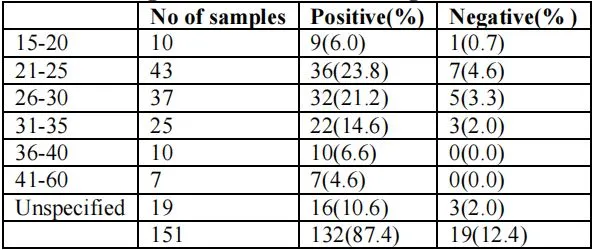
The age distribution revealed that the samples from the age group 21-25 years had the highest prevalence (23.8%) and a decline in prevalence as age progresses (table 2) this is similar to what has been reported in a study carried out in Adamawa and Yola and agreed with the claim by some authors that females in the tropics contact rubella virus infection before attaining childbearing age and may be of the fact that antibody level wares with age. However, in some rare cases, seropositive women may become infected during re-infection.
Table 3: Urban and Rural Distribution

Many countries in the developing world have reported relatively low rubella susceptibility rates compared to those of industrialized countries in their pre-vaccination periods. Peru found a marked difference in estimates of rubella infection in urban and rural areas.
However, this study showed that the rate of susceptibility among rural dwellers (6.6%) is slightly higher than urban dwellers (6.0%) but this may be due to the fewer numbers of urban dwellers enrolled in this study (Table 3 above).
Table 4: Occupational distribution
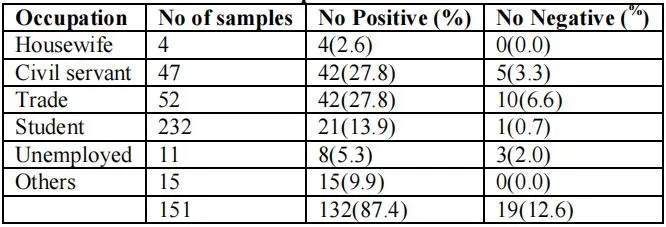
Had reported the highest incidence in housewives in a study carried out in Adamawa and Kaduna. In this experiment, both civil servants and traders had the highest prevalence of 27.8% (Table 4). This may be due to the small number of housewives that were screened in this study. Data from their education background showed that women that have tertiary education had the highest prevalence (Table 4). This may be due to their level of exposure and interactions with others
Significant differences were observed between the place of residence and the religious groups. Although, seronegativity rate of 12.6% was observed in this study area, congenital Rubella syndrome could still occur, such that happened in a region of Oman, where only 4% of the women were susceptible.
More so a single case of rubella infection is considered a potential outbreak in United State. Pregnancy is a contraindication of the rubella vaccine, it is important to note that pregnant and pregnancy should be avoided for at least one month after receiving the rubella vaccine
This study has revealed that 87% of the study population are protected against rubella infection while 13% are not protected and are therefore at risk and need to be vaccinated. Elaborate control measures should therefore be put in place in the state and control be put in place in the state and country at large.
Though measures have been out in place in some facilities and the testing for the presence of Rubella virus are incorporated into a panel of test TORCH which is an acronym for the five (5) major testing done on newborn babies.
It contains Major testing for various pathogens and they include Toxoplasmosis, Rubella Cytomegalovirus, Herpes simplex virus 1, Herpes simplex virus 2 and HIV. These testing are very important to make that the baby is safe from any infection. Early detection of any disease can help offer good prognosis.
Vaccination has helped so far in reducing the incidence of some of all these diseases and it is very important that as a mother or if you are expecting a baby, you need to be vaccinated to prior conception. This will reduce the chances of pregnancy complications.
Conclusion
The strategies for rubella outbreak control include targeting susceptible populations for rubella vaccination ensuring that susceptible persons within the target population are vaccinated rapidly and maintaining free rubella and congenital rubella environment. It is advocated that more work should be carried out in neighboring states to ensure that Nigeria child does not suffer from preventable viral infections.
References •Rubella (German Measles, Three-Day Measles) - Rubella in the US •TORCH Complex •TORCH screening used appropriately in China?─three years results from a teaching hospital in northwest China •Rubella (German measles) revisited •Rubella Virus Replication and Links to Teratogenicity •Incidence of rubella in a state in North-western Nigeria: a call for action For detailed reference, kindly visit the original research work on my research gate profile.
Return from Original Research: Seroprevalence of Rubella IgG Antibodies in Women of Child Bearing Age attending a hospital in South-western State in West Africa to cyprianj's Web3 Blog

